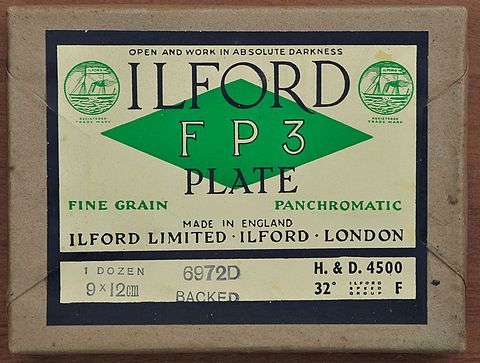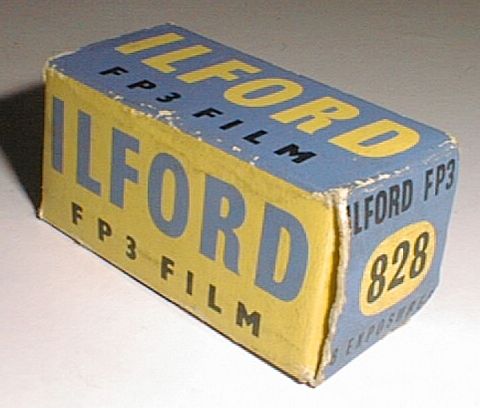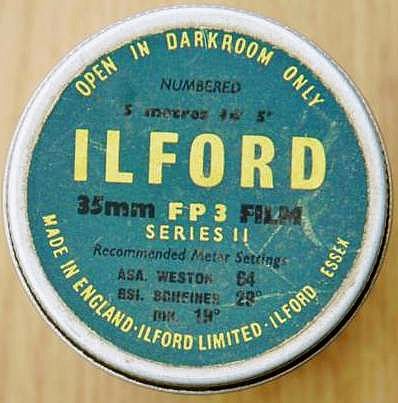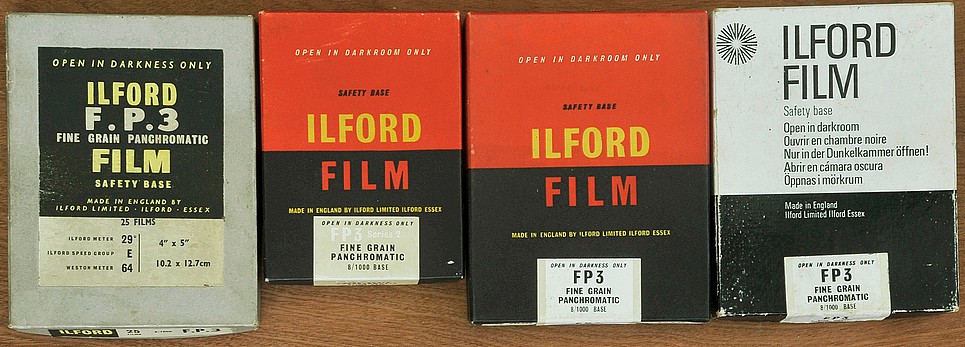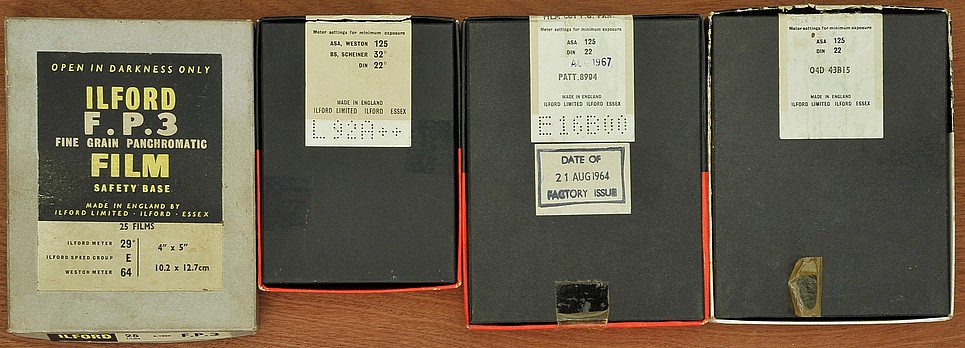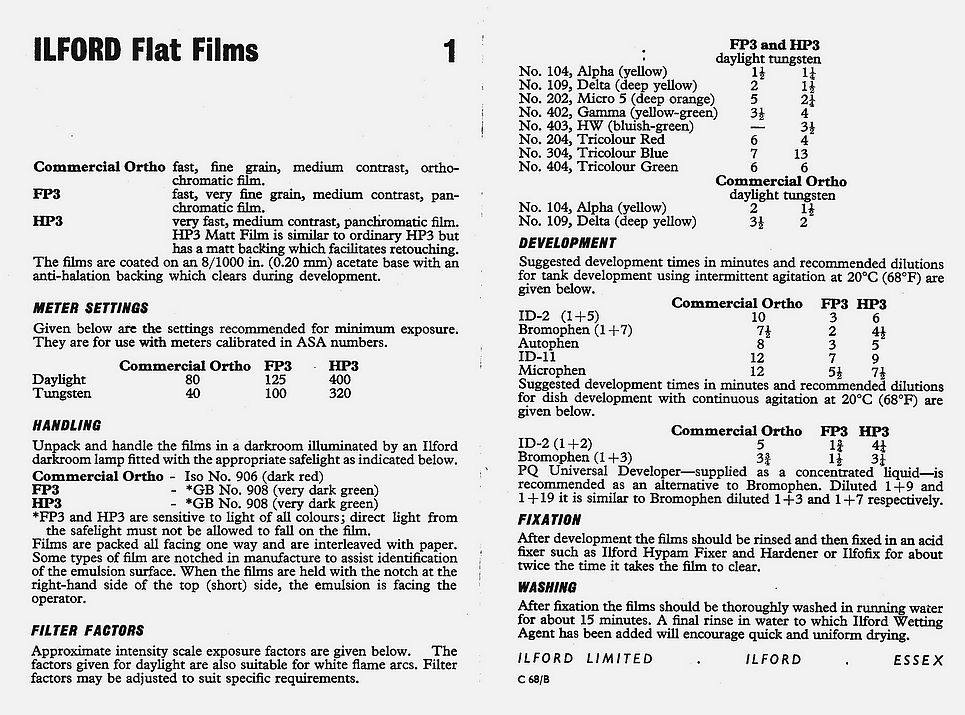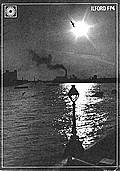| ILFORD FP3 labels; for FP4 labels, scroll down the page |
|
|
|
|
| ILFORD FP4 labels |
|
|
||||
| In 1955 the name
FP4 first appeared as a plate emulsion, a name not used
for roll & 35mm film until 1968. The box shown below (date
unknown) has a price of 14s.4d (72p) for 12 off 3½"x2½"
(means 6p each). FP4 plates had a pre-1960 speed rating of 80ASA. At that time, FP3 film was 64ASA. |
||||
|
|
||||
|
|
||||
|
By July, Ilford were offering a free 20 page booklet entitled "Ilford FP4" to amateur photographers "wishing to make the best use of the fine qualities of this new emulsion". It was obtainable by writing to Mike Williams, Customer Services, Ilford Ltd, Ilford, Essex. This booklet (see left) updated the booklet "Ilford FP3, Film of Many Faces" offered in 1965. It is dated March 1968. To view it as a PDF file, click on the image or here. Also, to download the ILFORD Technical Guide to FP4, click here. |
||||
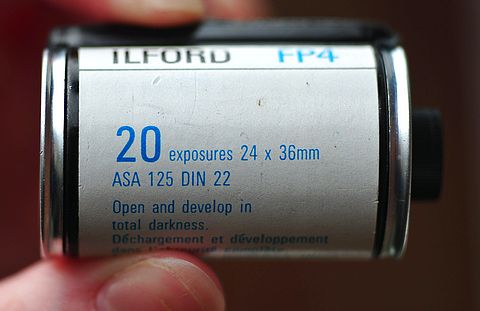 |
||||
|
|
||||
|
The image below is courtesy of Jim Fisk Three tins that used to hold
FP4 film. The top left held 30m of 35mm film and is dated December
1979 (presumably as 'use by' date) whereas the tin is coded F73,
indicating a date of May 1973. Because of its date of manufacture,
the film was already speed rated at 125ASA/ISO. |
||||
|
|
||||
| The image below of tins of bulk 35mm HP3 and FP4 film, in 33m and 50feet tins for self-reloading cassettes, has been sent by Leon Chipchase. With the length of the earlier HP3 film (1941 to Dec 1969) being in metric (33metre) while the later FP4 film (from 1968 to 1990) is in imperial (50 feet), its possible that either the HP3 tins are from near the last batch or they were sourced from the continent (or the film was intended for sale on the continent). Unlike the tins above, imaged by Jim Fisk, none of these tins appear to be date stamped, though possibly a date appears on their underside. | ||||
 |
||||
|
|
||||
| Ilford 220 FP4 was available in 5 roll professional packs by either December 1971 (date of printing of the leaflet enclosed with the film pack shown left) or more likely March 1972 (the date on the box itself). The film within the box had an expiry date of January 1978, so probably packaged around 1975. By 1982, Ilford 220 film was available both as FP4 and HP5 versions . But 220 film never seemed to 'catch on' to any great extent and by 2009 the availability of 220 film (in the UK at least) seems virtually zero. | ||||
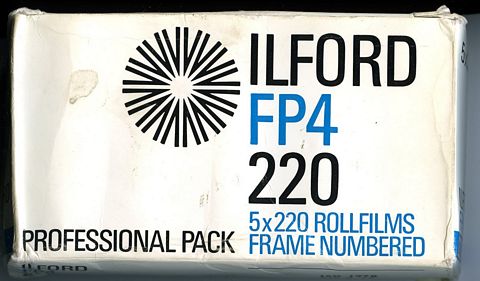 |
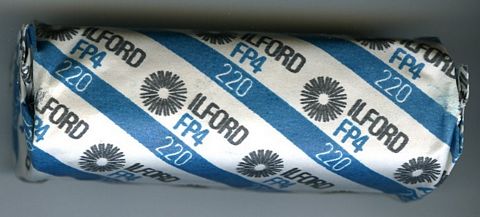 |
|||
|
||||
|
|
||||
